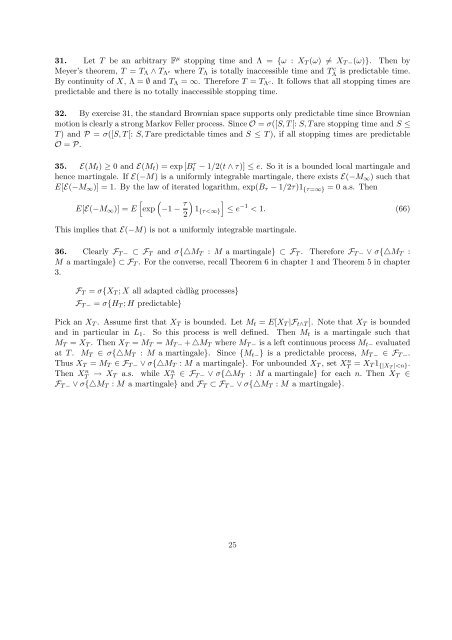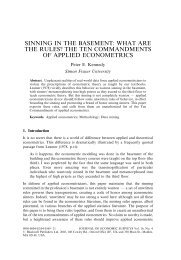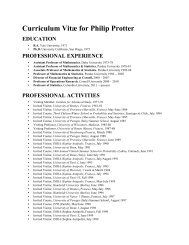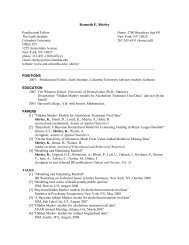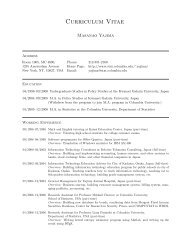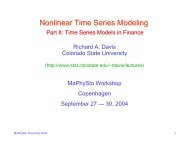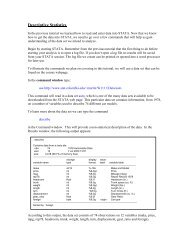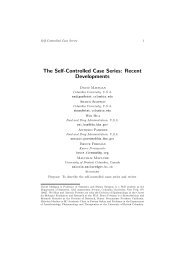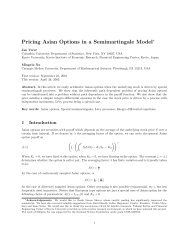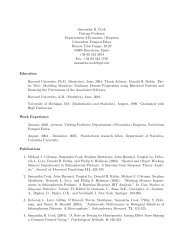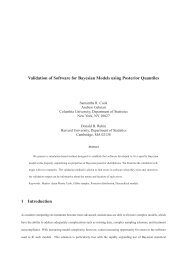Solution to selected problems.
Solution to selected problems.
Solution to selected problems.
You also want an ePaper? Increase the reach of your titles
YUMPU automatically turns print PDFs into web optimized ePapers that Google loves.
31. Let T be an arbitrary F µ s<strong>to</strong>pping time and Λ = {ω : X T (ω) ≠ X T − (ω)}. Then by<br />
Meyer’s theorem, T = T Λ ∧ T Λ c where T Λ is <strong>to</strong>tally inaccessible time and TΛ c is predictable time.<br />
By continuity of X, Λ = ∅ and T Λ = ∞. Therefore T = T Λ c. It follows that all s<strong>to</strong>pping times are<br />
predictable and there is no <strong>to</strong>tally inaccessible s<strong>to</strong>pping time.<br />
32. By exercise 31, the standard Brownian space supports only predictable time since Brownian<br />
motion is clearly a strong Markov Feller process. Since O = σ([S, T [: S, T are s<strong>to</strong>pping time and S ≤<br />
T ) and P = σ([S, T [: S, T are predictable times and S ≤ T ), if all s<strong>to</strong>pping times are predictable<br />
O = P.<br />
35. E(M t ) ≥ 0 and E(M t ) = exp [B τ t − 1/2(t ∧ τ)] ≤ e. So it is a bounded local martingale and<br />
hence martingale. If E(−M) is a uniformly integrable martingale, there exists E(−M ∞ ) such that<br />
E[E(−M ∞ )] = 1. By the law of iterated logarithm, exp(B τ − 1/2τ)1 {τ=∞} = 0 a.s. Then<br />
[ (<br />
E[E(−M ∞ )] = E exp −1 − τ ) ]<br />
1<br />
2 {τ


